Arriving in my hostel in the late afternoon, I set down my bags and headed off into the city. Wandering around for a couple of hours, I found a bench in the centre of town, where I ate my supermarket supper. After a long call with a friend – as was my wont for these next few weeks – I set off back to my hostel.
Returning to my dormitory, on the second floor of a block on the edge of the main town, I struck up a conversation with my roommate. Vinicius – or Vinny for short – was a twenty-something year old from Brazil, travelling via train across Europe for a couple of weeks. Over the next few hours we talked across the room from our beds; as with many conversations of the night, our discussions ranged from the mundane, to the political, and we outlined in detail our plans for the coming days. By the end of the night, a friendship was beginning to form, and a natural decision was reached: we would explore Stuttgart together the next day.
After a lie in and an ad hoc breakfast in the hostel downstairs, Vinny and I strolled into town. Sating my very particular craving of the last couple of weeks, we zoned in on a Five Guys in the centre of town for an early lunch. (No, I hadn’t looked up the existence of this branch many weeks earlier, don’t be ridiculous.) Cutting through the streets, we stepped into the odd church and weekend antique market. We stopped off at a Brauhaus that Ashish (from Mannheim) had recommended. Our event of the afternoon, was watching the Six Nations matches in an Irish pub — just as we had planned the night before.

Vinny left early the next morning, and with his farewell note in tow, I too set out around midday: climbing up and out of the valley, leaving Stuttgart behind me. I followed some paths through the forests on the hills to the east of the city, before descending towards the Neckar. At one point along the river, when the bridge I was headed for turned out not to exist, I found myself walking down the side of a dual carriageway — a wee bit precarious. No doubt my presence along the side of the road surprised and amused oncoming vehicles, as I pushed the roadside debris out of the way with my stick as I went. By mid-afternoon, I had reached the town of Esslingen.



The international stage
After Esslingen, I stopped at the town of Göppingen, and the following day zeroed in on the city of Ulm. Early on that day, as I followed a main road and then a path by a stream, I suffered a minor back spasm and, not wishing to aggravate the injury and put my walk in jeopardy, I caught a train into Ulm from the station in a town called Geislingen. (I planned to nurse my wounds and, if recovered, return to Geislingen the next day to walk into Ulm.) The hostel I found for the next couple of nights was right in the centre of Ulm; it was clearly part of the coffee shop below’s expansion project, and I was informed at the “check in” (at the counter of the café) that I was their second guest — they had opened up their new hostel facilities only the night before!
Having laid down my load, I walked somewhat tenderly through town, stopping off at a pharmacy, then a café, then a square, then the minster: standard Germany city tourism. Though it was quite routine at this point, it never lost that aura that solo travel carries with it; in peaceful solipsism, I explored town.
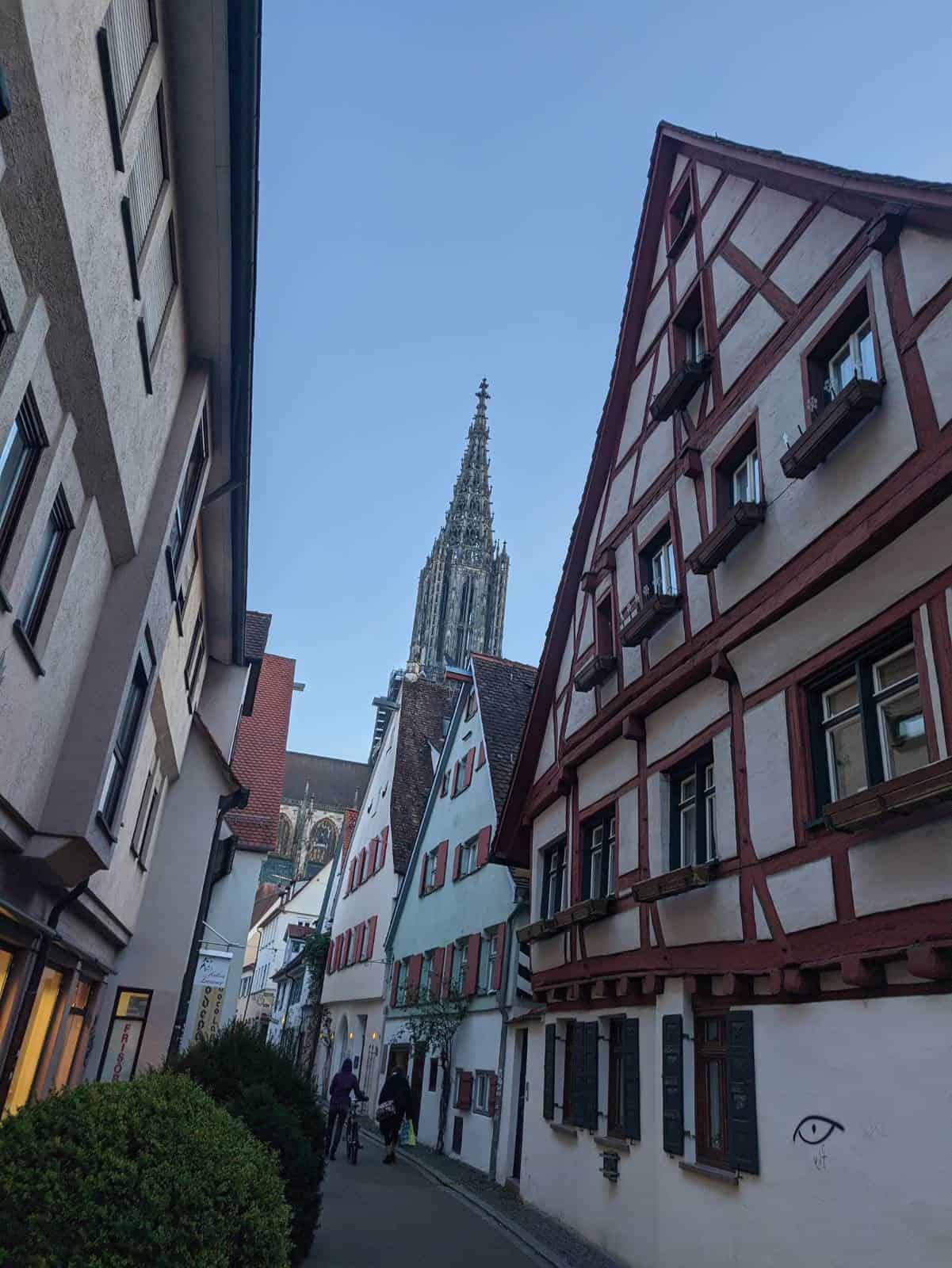
When, in the dark of the evening, I emerged from a cheap Brauhaus I had discovered not far from the Rathaus, my memories of my time in Ulm become firmly rooted in the German reactions to the developing war in Ukraine. There had obviously been news reports for some time of escalations on the Ukrainian-Russian border, as I travelled through the midlands of Germany. However, it was during my stay with Seb, back in the outskirts of Heidelberg, when the two of us woke to the news of the Russian invasion. Now, a hundred miles or so down the road, I was witnessing first hand the reaction of the German people to the events further east. And it was compelling. Back outside, a large Ukrainian flag had been draped over the façades of Ulm’s early renaissance town hall, half covering the carvings and illustrations of Matin Schaffner. While this was certainly a sign of the times, there was more in store. As I returned to the main square, I reached the front of the minster, where the façade had been lit up in blue and yellow. Two large projectors positioned at two corners of the square beamed the two colours through the night of the square, painting a flag across the full frontage of one of Germany’s most celebrated gothic cathedrals.
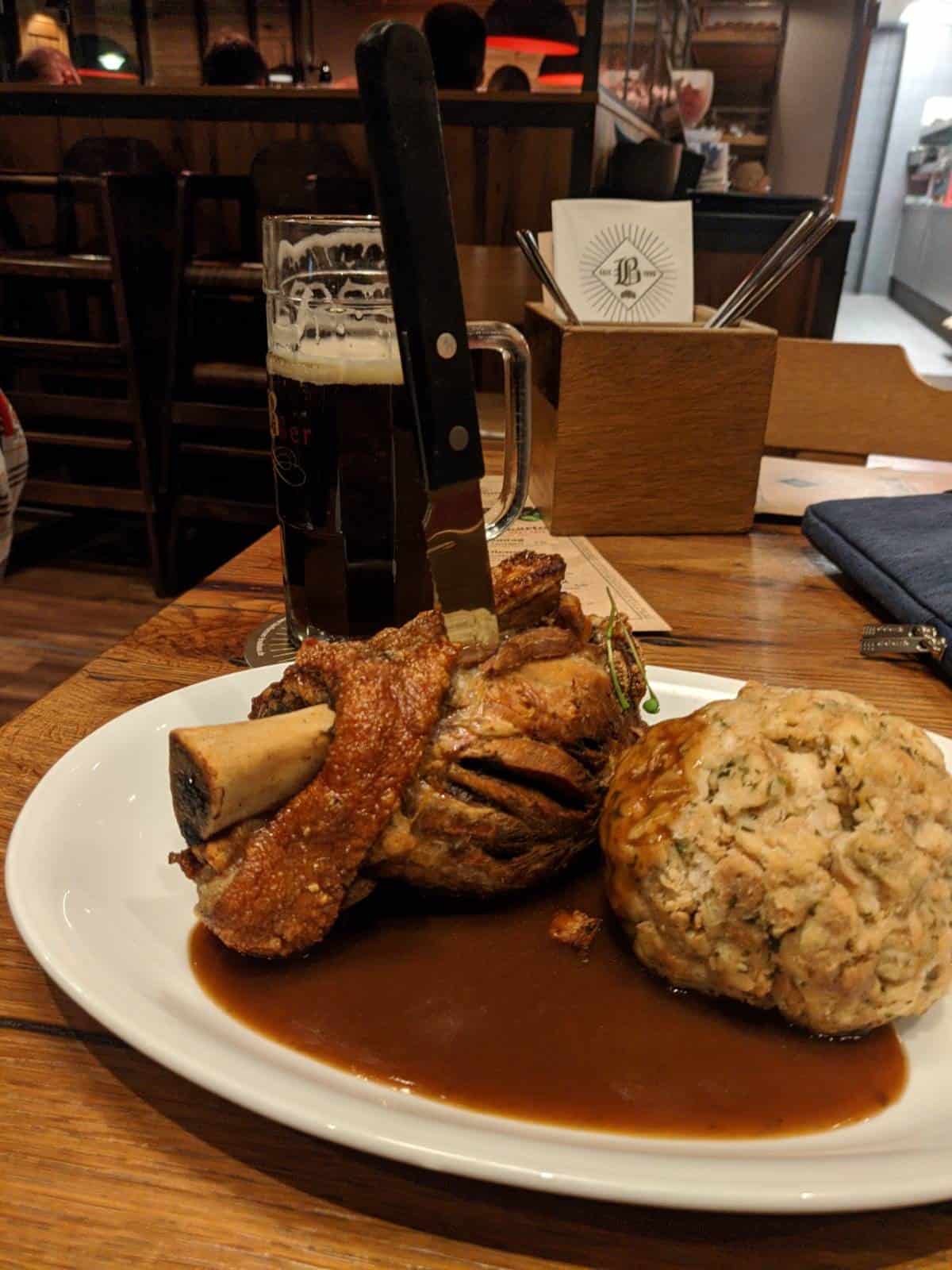

The next day, mostly recovered, I headed back (pack-less) to Geislingen, where I proceeded to walk into Ulm, completing the journey. A stream of water to the east of Geislingen had marked my final contact with the basin of the Rhine; that day I walked from the watershed of the Rhine to that of the Danube, which flows through Ulm. In that liminal space, where the waters of Europe diverge, I had arrived at a moment when war in the east seemed to be suddenly pulling the whole continent together.

Having returned to the city, I wondered around. Around the south side of the old town was a small area of charming canals lined with restored timbered buildings. One such building was the well-known Schiefes Haus (Leaning House), which I recalled discussing briefly in a German lesson a while back. The five-story house inclines 10°, peering down towards a canal and bridge below. It dates from the late gothic period (around 1440) and was once used by the shipmasters of Ulm; now, it is home to a hotel and serves as a leering tourist attraction — the subject of many a photograph from passersby. Not long after this, I was sat on a bench on the other side of town eating my late lunch, when an elderly lady sat down beside me and started up a conversation. Initially confused as to why I was struggling so much to parse her accent, it soon dawned on me: she was speaking Schwäbisch. What started as a conversation about her grandsons meandered into a distressed denouncement of Putin and war. Later that night, a peaceful gathering – with speakers and singing – took place in front of the illuminated minster. It was in the air.

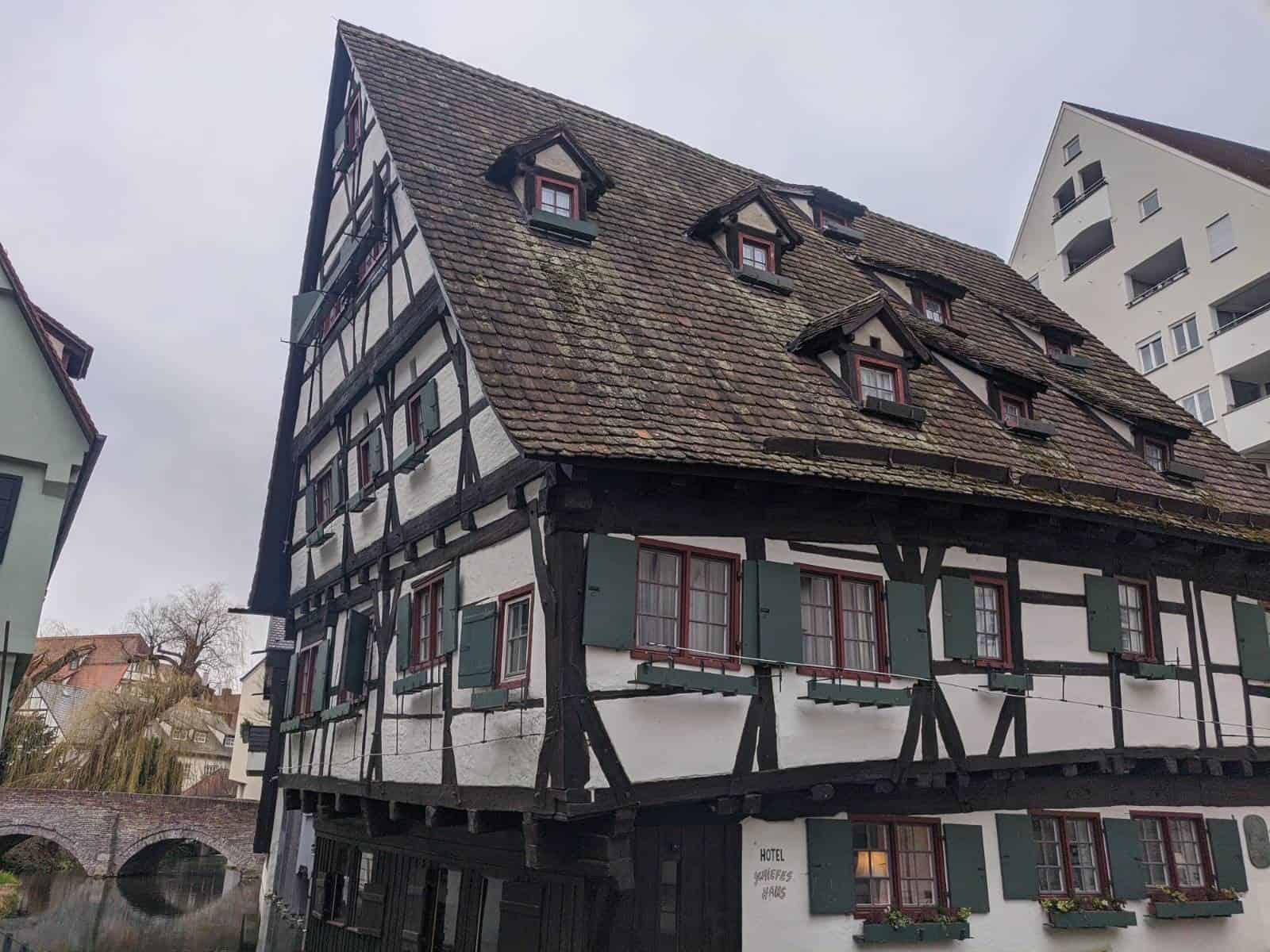
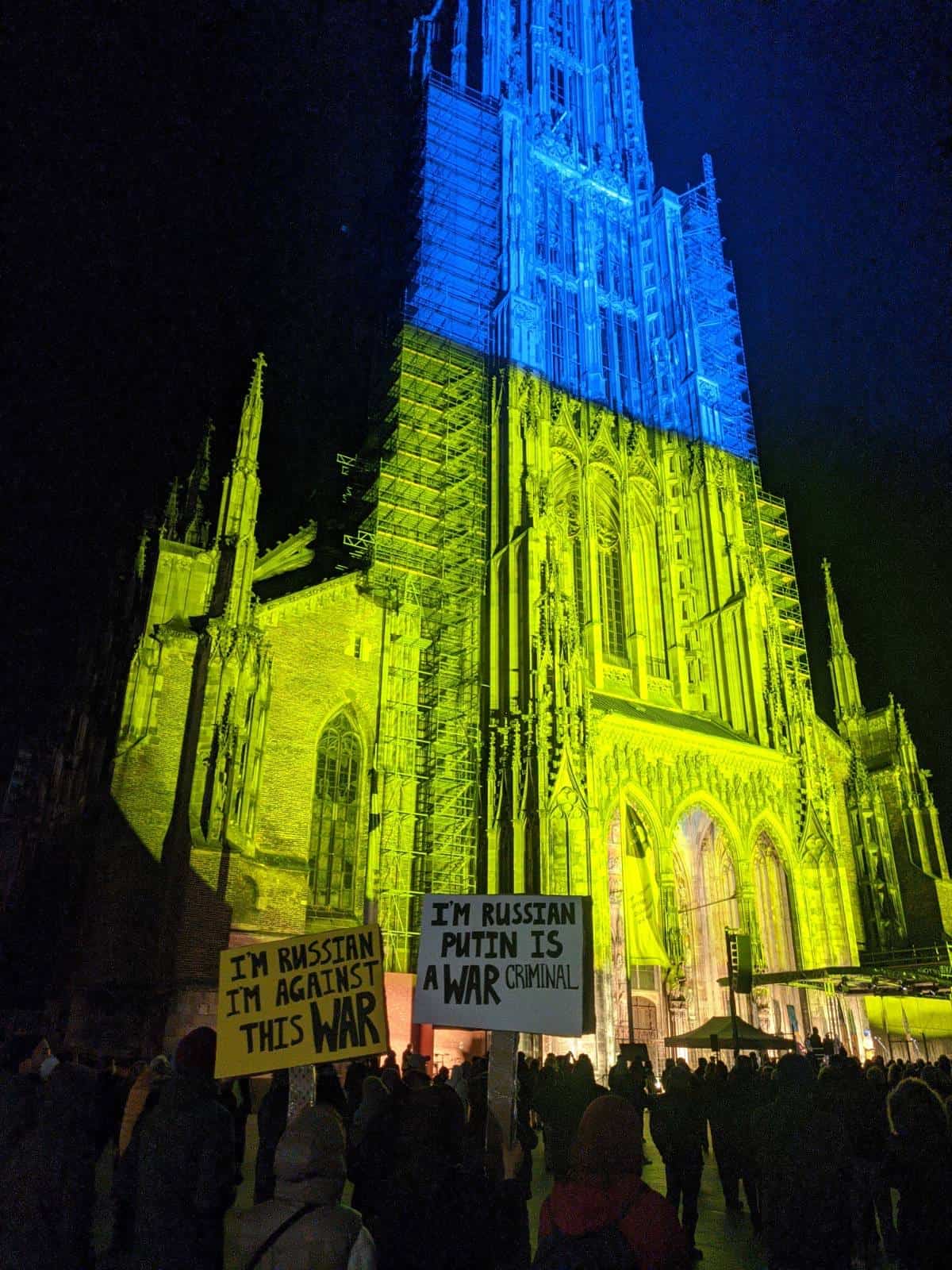
Into Bavaria
By mid-morning the next day, I had left Ulm and sought out a path on the Danube: a path which I would follow for almost the entire day. It was my first taste of walking the Danube — I had many, many hours ahead of me this trip along this giant of a river (the longest in Europe after the Volga).
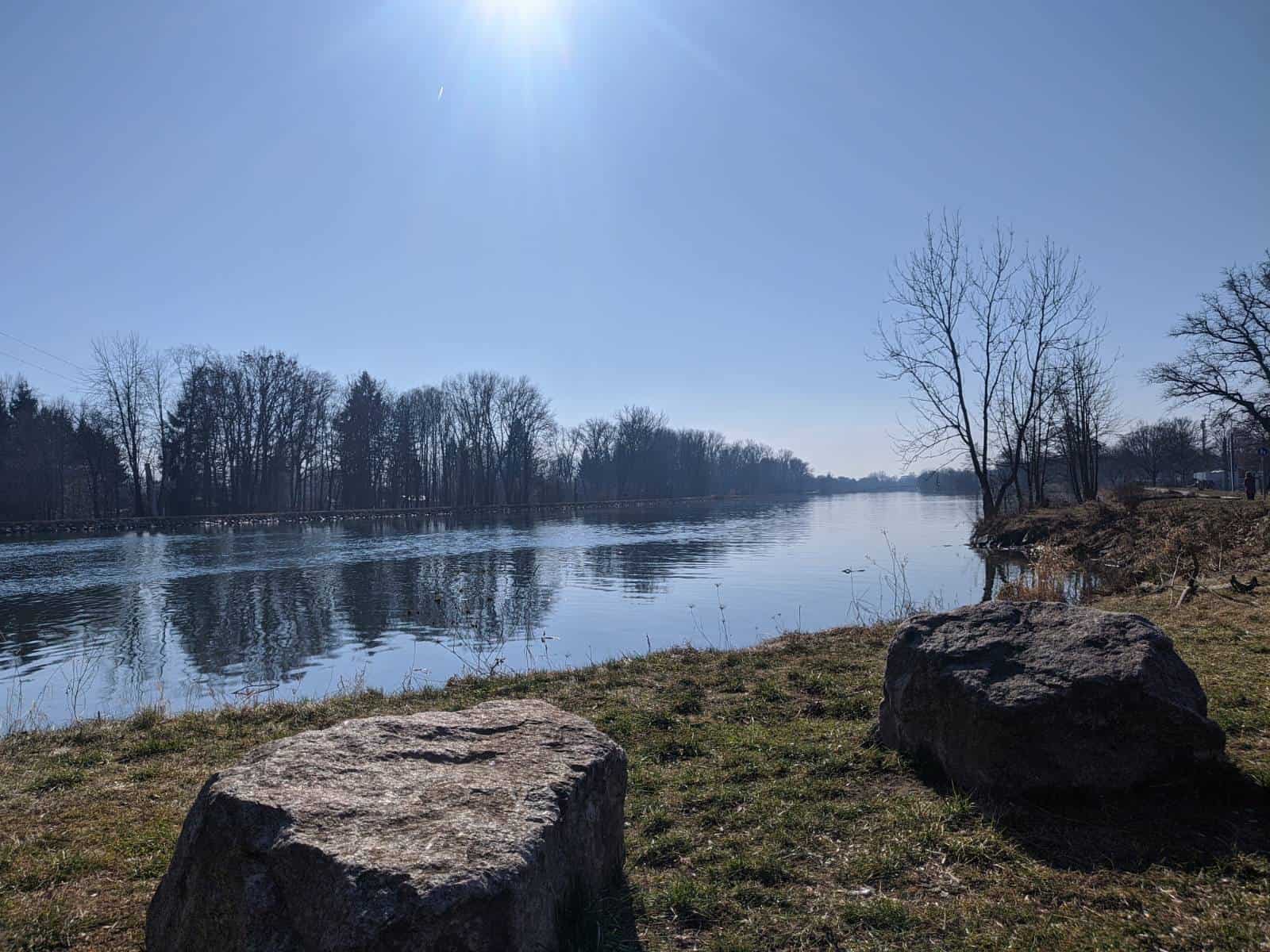
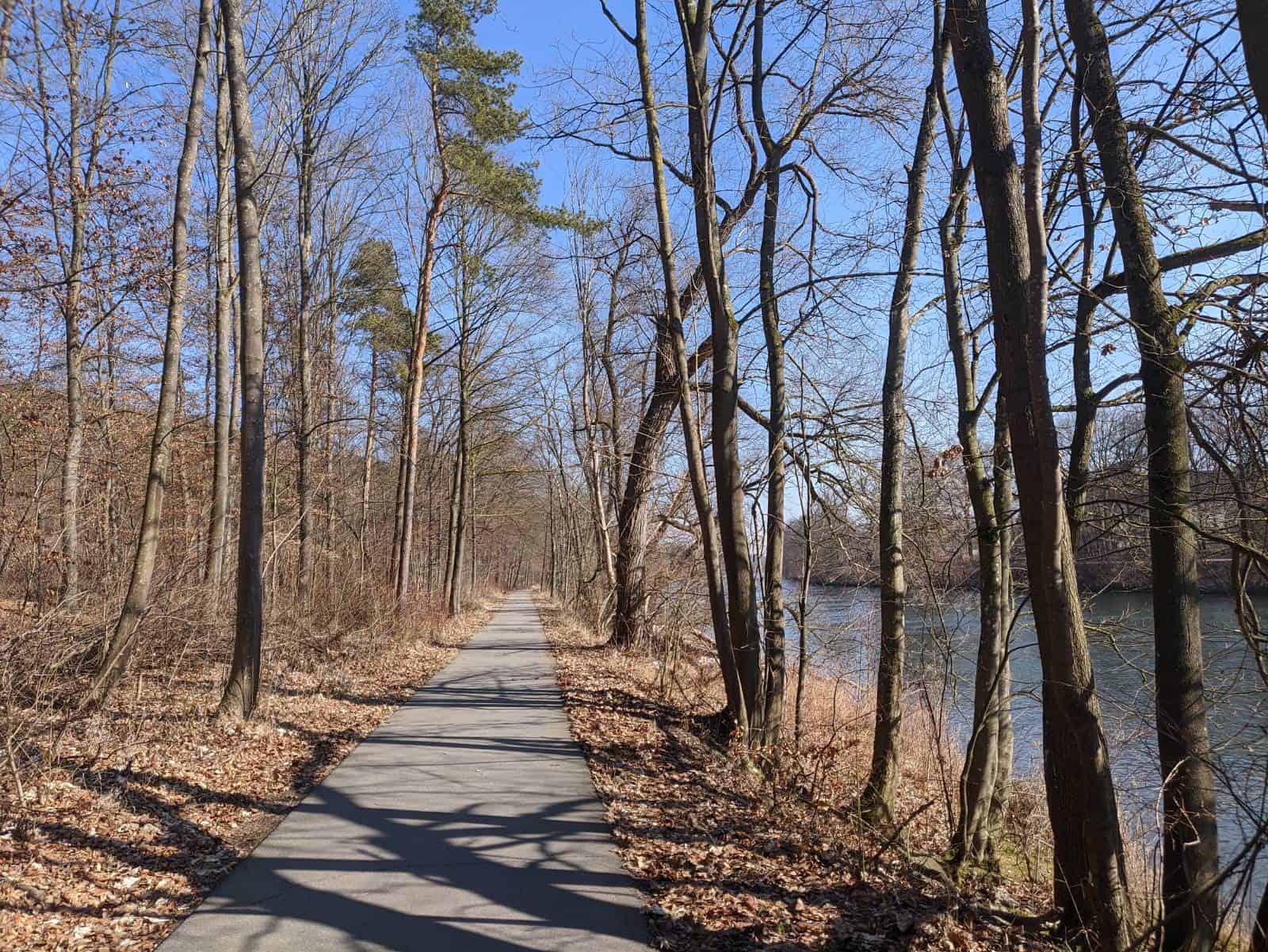
By midday, I had left Baden-Württemberg behind me; I had entered Bavaria. I had reached perhaps the most exotic region of Germany, the most whimsical: the largest German Bundesland by land mass by some way, and also the second-biggest by population (after North-Rhine Westphalia). This ingress, more importantly, marked the fourth Bundesländer of the trip and what would be my final one before I reached Austria.
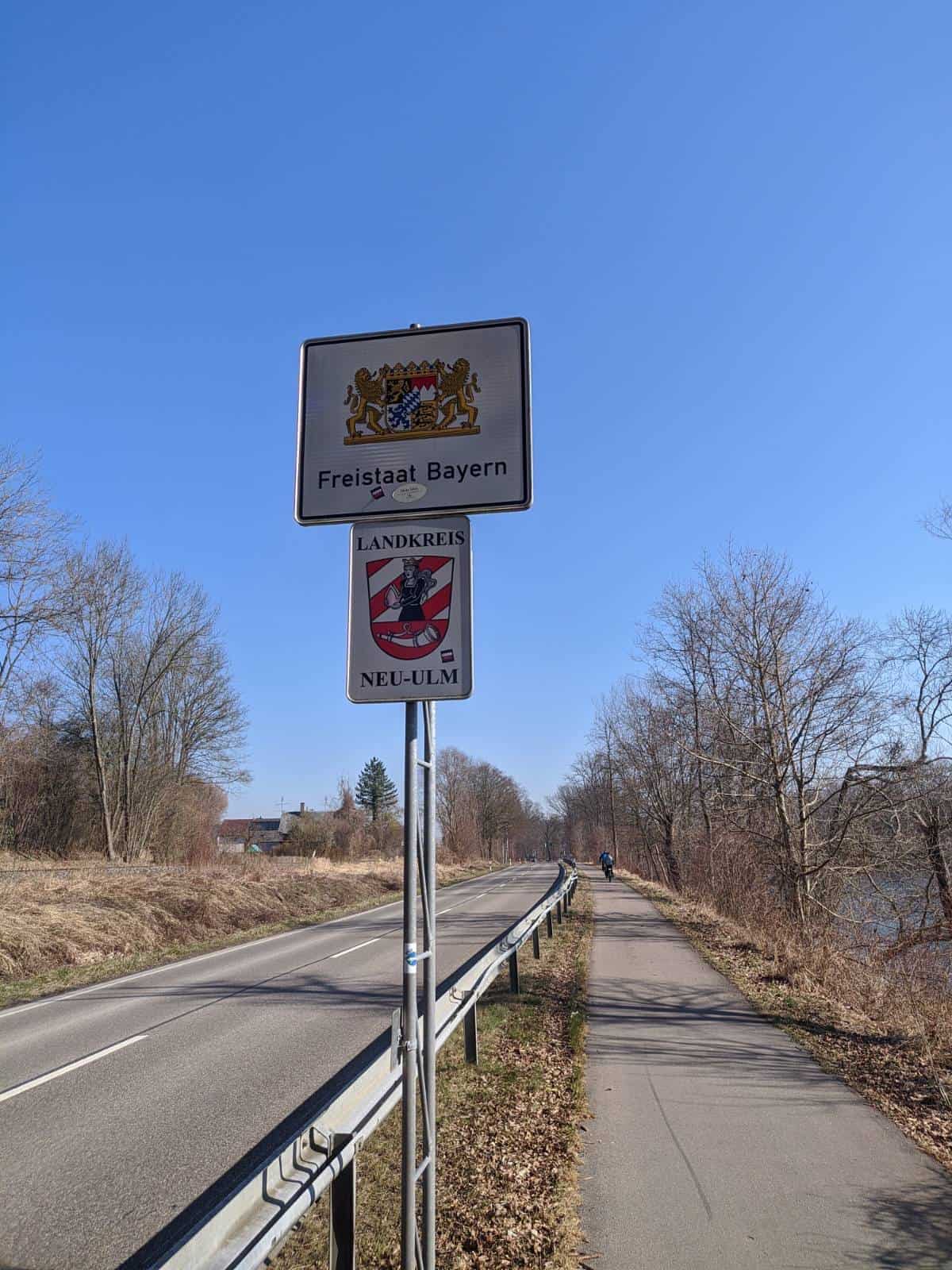
At one point that day, I was lost in the woods for about half an hour, slightly inland from the river. The shrubbery was thick and I tried to use my stick as a machete to tame the branches: wishful thinking. I retraced my steps and selected a more promising path.
At around 4pm, I reached Günzberg, my stop for the night. It was just what I was after: a good taste of Bavarian town life, complete with unmistakably Bavarian architecture. Wandering around town for a while, I gathered supplies for supper and for the road ahead.
My walk to the small village Zusmarshausen the next day mostly consisted of walking along cycle paths through woods and forests. It was all vivid, relaxing even. I had planned to sleep in the woods – these were Bavarian woodlands, after all! – though I had to ditch that plan when it was forecast to reach -9°c with frost warnings that night. Instead, I found an inn attached to a restaurant. Tucked up in bed, I fell asleep to the muffled hubbub of the diners in the room next door, and the notable waft of tobacco smoke.
Urban Bavaria
I walked from Zusmarshausen to my hostel in Augsburg. Following a cycle lane by an A road through fields until the outskirts of the city, I then cut towards and across the old town. I dropped my bag off around 3:30pm and walked around the centre of town for a bit. I then headed back to retrieve my clothes from the hostel and found a laundromat to wash and dry them (for only the second time on the trip). Given tomorrow was a Sunday, I picked up some more provisions, which quelled my fears that I might wake to find everything closed. I then headed to the Ratskeller for food and a couple of home-brewed beers — the first Bavarian beer of the trip.
The next day – a rest day – I did some reading and writing, before I toured the sights of town. My visit to the Fuggerei was certainly the highlight of the day. Right across the road from my hostel, the Fuggerei is the oldest public housing system in the world, officially founded by Jakob Fugger (a rich Augsburg patron) in 1521 (though the project had started seven years prior). A gated community in the centre of town, the social settlement is still in use today; 150 needy Catholic Augsburg citizens live in the 140 flats within the 67 houses for an annual rent of €0.88 (the modern equivalent of one Rhenish gilder). Tourists like myself can tour the inside of the complex, visit the museum which takes one through its history – from the founding to modern day – and visit two model homes: one from the modern era and one restored to 16th century conditions.


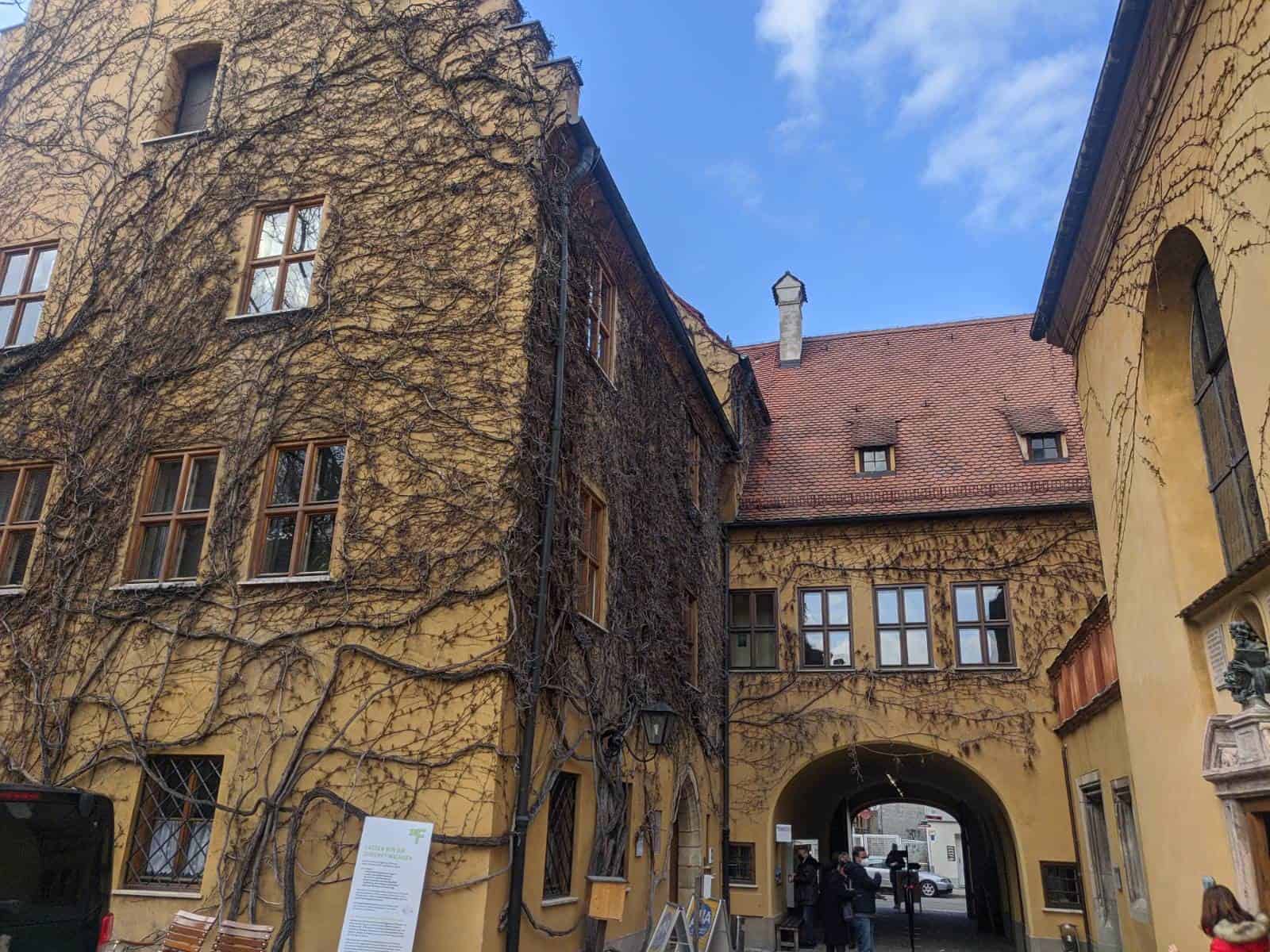
Approaching Munich
The next morning was the coldest of the trip hitherto: in -3 °C conditions I walked out of Augsburg, and the rest of the day wasn’t much warmer. It was a long day; after the cycle lane I was doggedly following disappeared in the middle of a field, I walked along the side and, when needed, down the tarmac of a B road. For a while, spirits were low: I had miscalculated where I could find food on the road and was rather hangry. However, I soon found a bakery and Lidl on the east side of Odelzhausen and, as if by magic, was suddenly in much brighter spirits. Despite the cold, the sun was out; the sky and fields through which I ambled at the end of the day were lit up in a subtle, pink hue of the setting sun as I entered Einsbach, the tiny village where I was due to stay not far from the town of Dachau. Munich, a definitive milestone in my mind, was not far off down the road.

A hectic month or so, coupled with writer’s block of a kind, have slowed my blog’s post production. Never fear; I’ve remounted the horse. There’s plenty more to come.

Wow Noah I am really enjoying your trip with you.